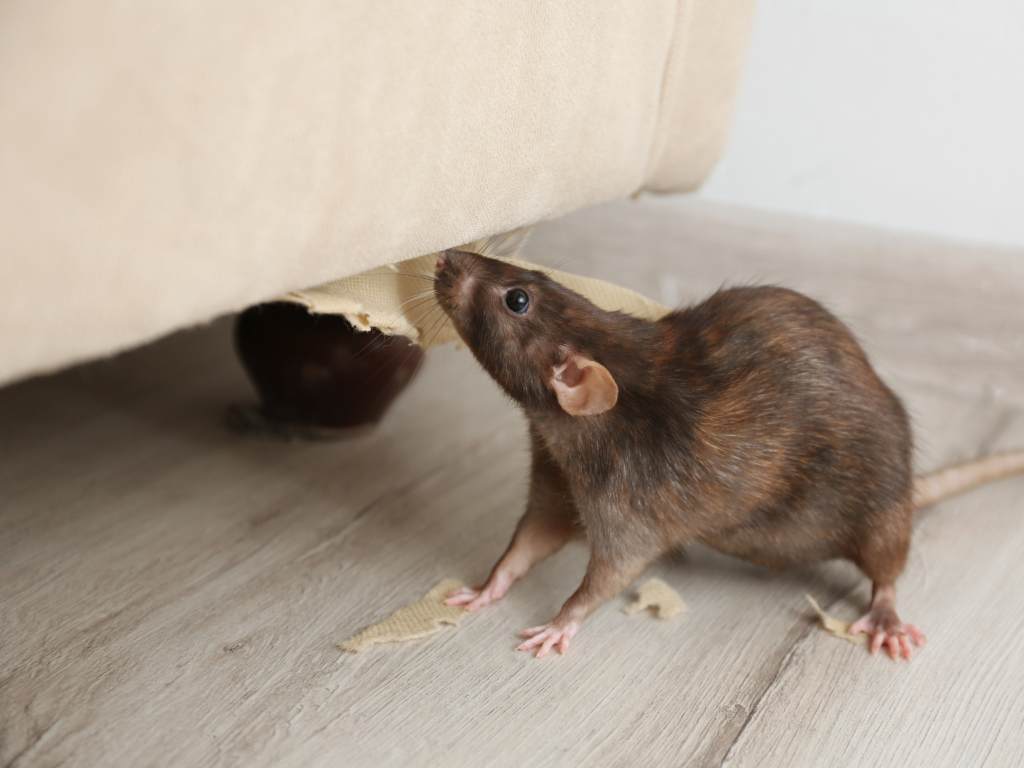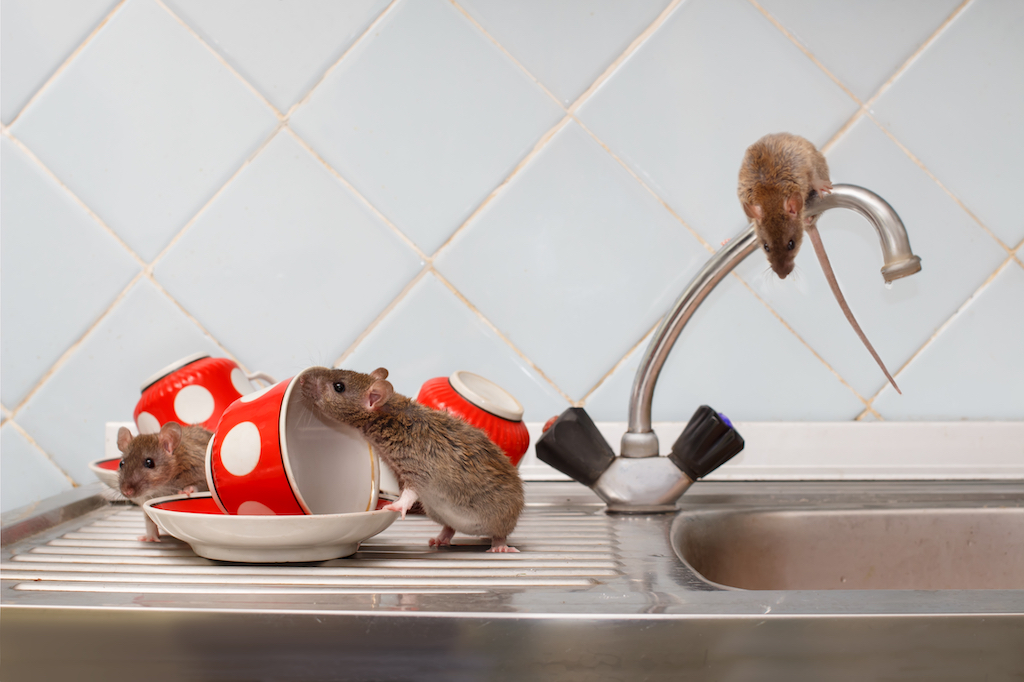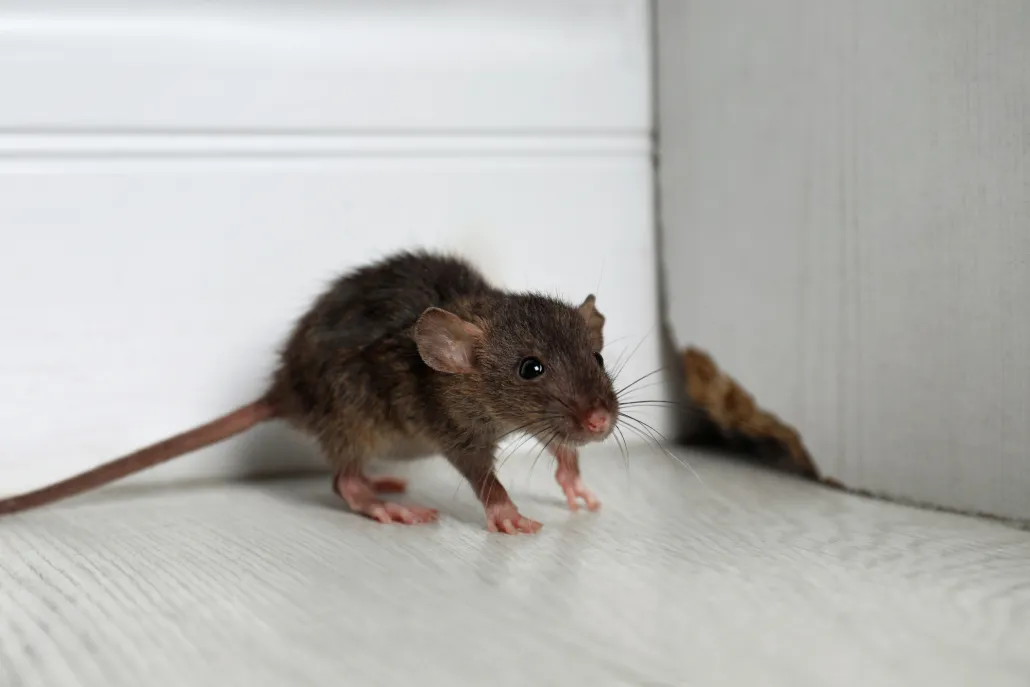Rodent Treatments in Florida
Exterminator Services for Hialeah, Hollywood, Opa Locka, Hallandale, Dania, and Pembroke Pines
Florida’s warm, subtropical climate—featuring high humidity and mild winters—offers near-perfect conditions for rodents to settle year-round. In heavily populated or fast-growing cities such as Hialeah, Hollywood, Opa Locka, Hallandale, Dania, and Pembroke Pines, rats and mice can find abundant food, water, and shelter. Once they sneak through small openings in foundations or walls, rodents nest behind appliances, in attics, or around clutter, quietly breeding until occupants notice droppings or gnaw marks. This service page discusses why rodents thrive in Florida, the red flags that indicate an infestation, and the importance of turning to a professional rodent exterminator for comprehensive, lasting removal. By examining their behaviors, recognizing key signs, and deploying targeted control strategies, property owners can protect their homes or businesses from damage and health risks posed by these persistent pests.
Why Rodents Flourish in Florida

1. Mild Weather
Mice and rats remain active above 50°F, a condition Florida comfortably meets year-round. Even brief temperature drops seldom disrupt their cycles. Heated and air-conditioned spaces in places like Hialeah or Hallandale further encourage rodents to forage and breed regardless of seasonal changes, allowing near-constant reproduction.
2. Easy Access to Food
Urban and suburban areas provide rodents with frequent meals—unsealed pantry items, unsecured trash, pet food bowls, or restaurant dumpsters. Florida’s density of restaurants, markets, and commercial districts ensures abundant scraps if sanitation lapses. From leftover takeout in a residential trash can to spilled feed in a store’s stockroom, mice and rats exploit every opportunity.
3. Multiple Shelter Options
Rodents nest where they can hide from predators and maintain consistent warmth or moisture. Homes with neglected attics, gaps around utility lines, or cluttered garages become havens. Outdoors, overgrown shrubs or yard debris also serve as stepping stones for rats or mice to approach and enter buildings.
4. Limited Natural Predators in Cities
While rural locales may have snakes, hawks, or feral cats controlling rodent numbers, higher population densities and infrastructure in Opa Locka, Hollywood, or Pembroke Pines often reduce predator presence. This lack of external pressure allows rodents to multiply freely unless promptly addressed by owners.
Telltale Signs of a Rodent Infestation
1. Droppings
Rodent droppings resemble small, dark pellets—about a quarter-inch for mice, half an inch or more for rats. Finding them in drawers, cabinets, or along walls indicates active feeding or nesting. Fresh droppings are shiny and soft; older ones become brittle or powdery over time.
2. Gnaw Marks or Holes
Mice and rats constantly chew to wear down their incisors. Small, rough-edged holes in baseboards, furniture, or packaging strongly suggest rodent presence. Wiring stripped of insulation raises the risk of electrical problems, making thorough inspection and repairs vital.
3. Nocturnal Scuttling
Rodents typically forage after dusk, so faint scratching or squeaking at night may come from behind walls, under floors, or in attics. Hearing unexpected rustling in quiet hours often signals nesting rodents moving between feeding spots and hideouts.
4. Greasy Rub Trails
Rats and mice prefer to run along edges, leaving oily smudges on walls or baseboards from their fur. Persistent, dark streaks near floor edges or corners reflect well-worn travel routes. The heavier the smudges, the more frequently rodents use that path.
5. Nesting Materials
Rodents build nests from shredded paper, fabric, or insulation. Discovering messy clumps in attic corners, storage boxes, or hidden recesses confirms a breeding colony. Nest sites usually accompany droppings and gnaw damage, revealing an established infestation.
Risks of Ignoring Rodents
1. Escalating Population
Rodents reproduce swiftly, with female mice bearing several litters yearly. Delaying control efforts allows each litter to spawn new generations, deepening contamination and structural problems over time. Early intervention saves costs and hassle down the line.
2. Disease and Allergens
Mice and rats can carry pathogens such as hantavirus, leptospira, or salmonella. Their droppings or urine contaminate surfaces or stored goods, posing potential health threats for humans and pets alike. In addition, rodent dander or droppings can exacerbate allergies or asthma.
3. Structural Damage
Ongoing gnawing at wood, drywall, or wiring can degrade a building’s integrity and increase fire risks. Over time, large holes in walls or floors might demand extensive renovations. Repairing damage early, coupled with rodent removal, avoids more disruptive remedial work later.
4. Spoiled Food and Inventory
In a home setting, rodents taint pantry items; in commercial environments (like restaurants or warehouses), they ruin stock, hamper compliance with health regulations, and tarnish public reputations. Repeated loss from gnawed packaging or droppings can weigh on businesses financially.
5. Spread to Neighbors
Rodents in one house or building can migrate to adjacent lots or units, especially if sanitation standards vary or structural openings align. Addressing a problem swiftly limits roaches from bridging shared walls or yard perimeters, preventing widespread community issues.

Why a Professional Exterminator Is Crucial
1. Expert Identification of Rodent Species
Florida is home to various rodent types—like house mice, roof rats, and Norway rats—each demanding different tactics. A skilled mice exterminator recognizes the species at hand, choosing baits, traps, or solutions that effectively address that rodent’s nesting habits.
2. Comprehensive Inspection
Technicians investigate every potential nesting or feeding site, from attics and basements to yard edges and cluttered corners. This thoroughness ensures no hidden droppings or entry points remain overlooked. DIY efforts may miss rodents deeper in walls or overhead spaces.
3. Safe, Targeted Control Methods
Professionals employ rodenticides responsibly, often placing them in tamper-resistant stations so pets or children remain safe. They also strategically position traps along common runways, limiting occupant exposure and maximizing rodent captures.
4. Structural Exclusion and Repairs
Killing current rodents without sealing off access only encourages future invasions. Exterminators seal foundational cracks, add door sweeps, or patch roof vents, preventing re-entry. Coupled with occupant improvements—like reorganized storage—the approach deters new waves of mice.
5. Continued Monitoring and Prevention
Some infestations need follow-up visits to confirm success and catch any newly emerged rodents. A professional exterminator sets traps or monitors high-traffic zones, adjusting placements if signs of rodents resurface. This ongoing vigilance cements permanent relief.
Typical Methods for Rodent Treatments
1. Inspection and Mapping
The exterminator notes droppings, grease smears, or gnaw marks indoors and outdoors. They determine where rodents feed, nest, and move. Understanding these patterns shapes an intelligent, efficient plan instead of guesswork-based product placement.
2. Trapping and Baiting
Common solutions include snap traps, multi-catch traps, or secured bait stations. Placed strategically along baseboards, behind appliances, or near nesting spots, these devices capture or poison rodents effectively. Slow-acting baits let mice share toxins with colony mates before dying.
3. Exclusion and Structural Sealing
After reducing rodent numbers, professionals fix entry points—adding wire mesh to vents, filling small holes with caulk or steel wool, and installing door sweeps. Occupants may be guided on storing trash in bins with tight lids or moving clutter away from foundation walls.
4. Sanitation and Cleanup
A cleaner property discourages rodent activity. Discarding gnawed items, sealing leftover food, or removing stagnant water deprives rodents of resources. Exterminators may also sanitize droppings or urine spots to eliminate scents that attract new rodents.
5. Follow-Up and Maintenance
If droppings reappear or occupant concerns persist, exterminators revisit to re-bait or reposition traps. Long-term rodent control demands occupant cooperation—further tidying, immediate trash disposal, or scheduling seasonal checks ensure the property remains rodent-free.

Service Areas
Hialeah
One of South Florida’s most populous cities, Hialeah’s older apartments and busy commercial sectors can inadvertently harbor mice if routine upkeep slips. A professional mice exterminator tackles the tight corners and hidden cavities typical of older buildings.
Hollywood
Known for beaches and tourist draws, Hollywood’s restaurants and lodgings must ward off mice diligently. Rapid professional responses keep roach or rodent sightings from tarnishing the city’s welcoming atmosphere for residents and visitors alike.
Opa Locka
With distinctive architecture and diverse neighborhoods, Opa Locka’s mild climate fosters year-round mouse activity indoors and out. Exterminators identify potential infiltration points, deploying baits and sealing cracks to minimize property damage and occupant stress.
Hallandale
Situated between major urban centers, Hallandale sees heavy traffic, which can sometimes introduce rodents via shipments or visitors. Residential developments rely on thorough rodent treatments—snap traps, tamper-proof bait stations, plus occupant vigilance—to curb infestations.
Dania
Close to Fort Lauderdale’s major attractions and transit hubs, Dania’s mix of waterfront homes, shops, and historic sites stands vulnerable to rodent migration. Exterminators perform sweeping checks of older structures, reinforcing gaps or utilities that might shelter mice.
Pembroke Pines
A sprawling suburban locale, Pembroke Pines features countless family homes and commercial complexes that mice might exploit for easy meals and nesting corners. Effective synergy—trap setups, occupant sanitation, and structural fortifications—prevents rodent expansions.
Why Our Rodent Treatments Excel
1. Florida-Focused Experience
Years of rodent control across South Florida inform our proven strategies. Recognizing how mild winters, rainfall patterns, and local building styles affect mouse behavior helps us customize solutions for each city, from Hialeah to Pembroke Pines.
2. Detailed Inspections and Personalized Plans
Each infestation is distinct. We inspect thoroughly, locating droppings, gnaw marks, or nest materials, then design trap or bait placements and exclusion steps matched to your building’s layout. This precision ensures maximum results and minimal occupant disruption.
3. Emphasis on Safety and Efficiency
Our exterminator team uses regulated rodenticides within tamper-resistant stations or specialized traps along mouse runways. We reduce occupant exposure while ensuring that mice feed on baits or get caught quickly. Clear instructions on reentry times or leftover rodent disposal guarantee occupant well-being.
4. Ongoing Education and Support
Comprehensive rodent solutions include occupant awareness of improved trash handling, secured food storage, and yard decluttering. Should you spot new droppings or hear nighttime scratching post-treatment, we return to evaluate and enhance the plan as needed.
5. Swift Response and Sustained Relief
Rodents breed fast, so we respond urgently to calls from Hollywood, Opa Locka, Hallandale, Dania, or Pembroke Pines. By combining strategic elimination of current mice, rigorous sealing efforts, and occupant-oriented prevention, we deliver lasting respite from future infestations.
Next Steps
If you’ve observed small droppings near food cupboards, chewed through packaging, or strange scuttling noises behind walls, it’s time to act before rodents multiply further. Contact us to learn more or schedule your service. Early intervention prevents structural damage, contamination, and the additional health hazards mice bring.
Our mice treatments—meticulously adapted for Florida’s environment—attack infestations at every level, from initial infiltration sites to potential breeding zones. Whether you operate a storefront in Hialeah or own a family home in Dania, a professional mice exterminator can restore confidence, safety, and cleanliness, ensuring rodents remain outside where they belong. Don’t let small gnawing sounds grow into large repairs and bigger worries—secure your property against mice now.
Maintaining a Mice-Free Environment
- Store Food Securely
Move cereals, grains, snacks, and pet kibble into sealed plastic or glass containers. Even tiny holes in packaging can allow mice to feast, encouraging them to linger or invite others. - Eliminate Water Sources
Fix leaky faucets, dripping AC units, or pooling water around property exteriors. Mice need hydration; cutting off easy water sources makes your home less appealing. - Tidy Up Clutter
Packed garages, attics, or closets brimming with boxes grant mice secluded nesting areas. Raise items on shelves, discard unneeded clutter, and leave some space around walls for easy inspection. - Dispose of Garbage Wisely
Keep indoor trash cans lidded and remove kitchen waste daily. Outside, ensure bins have snug covers and are stored away from exterior walls to discourage rodent rummaging. - Seal Entry Points
Inspect your home’s perimeter for cracks or holes around doors, windows, foundation lines, or utility pipes. Fill them with steel wool, caulk, or weather stripping. Mice require only a dime-sized gap to squeeze indoors. - Monitor for Recurrence
Continue checking for droppings, grease smudges, or fresh chewing. If rodent signs resurface, consult your exterminator to adjust baits, traps, or sealing measures. Early alerts keep mice from regaining a foothold.
By applying these preventive steps alongside expert rodent treatments when necessary, residents and businesses across Hialeah, Hollywood, Opa Locka, Hallandale, Dania, and Pembroke Pines maintain peace of mind, safeguarding themselves from the structural harm and health hazards mice create. Florida’s consistently mild weather may support rodent growth, but consistent vigilance, property upkeep, and specialized pest control guarantee that these tenacious pests remain at bay.
